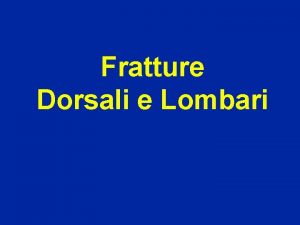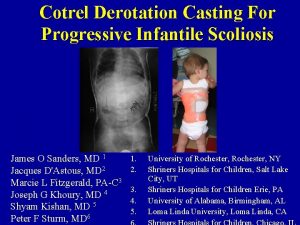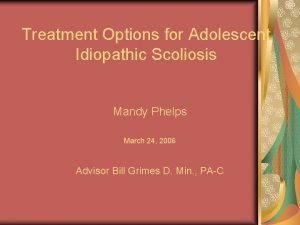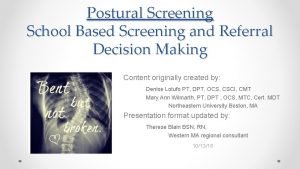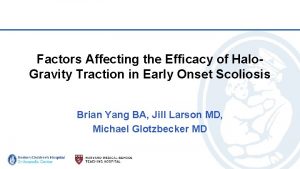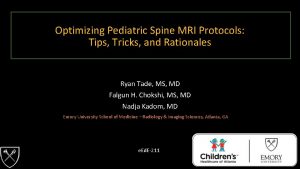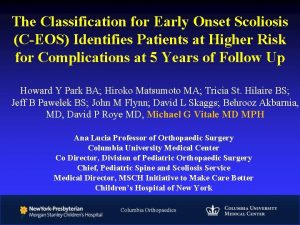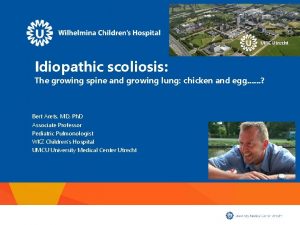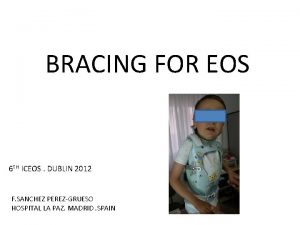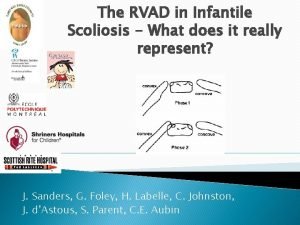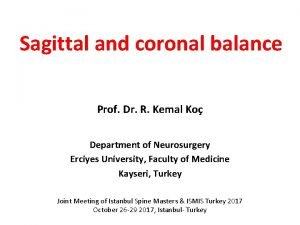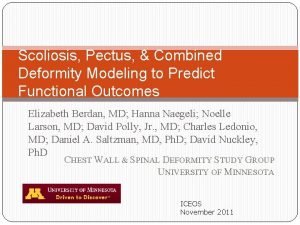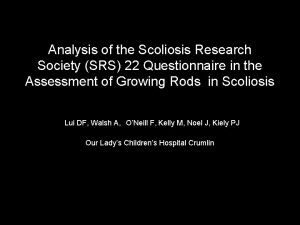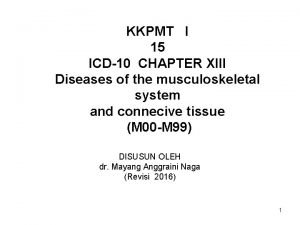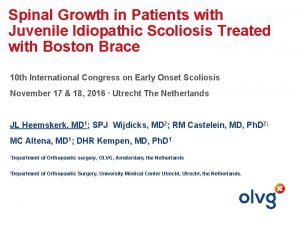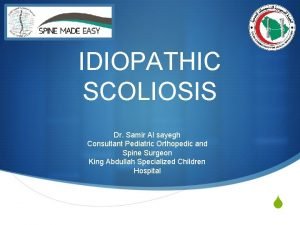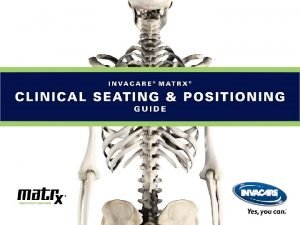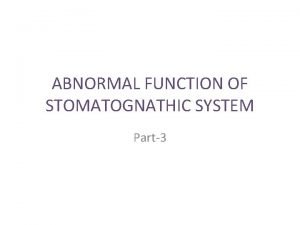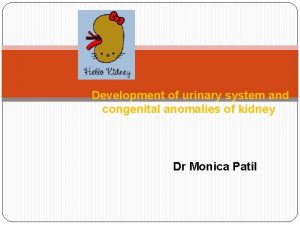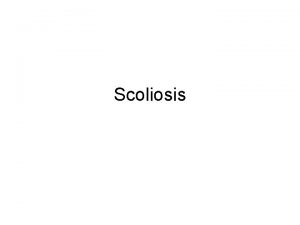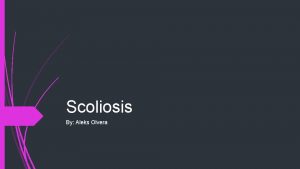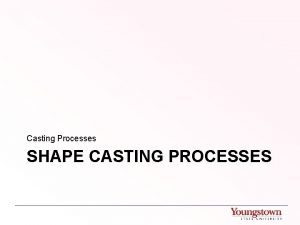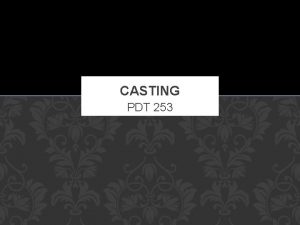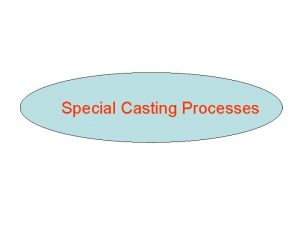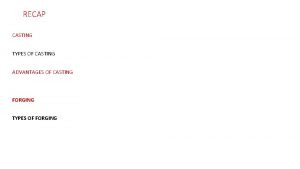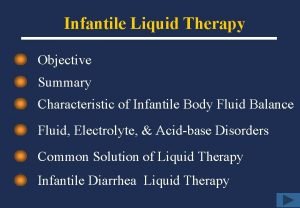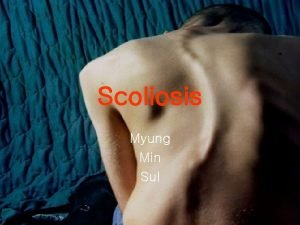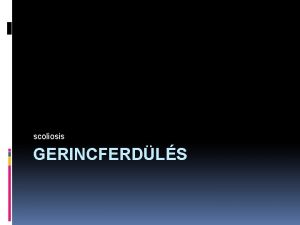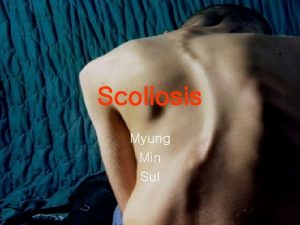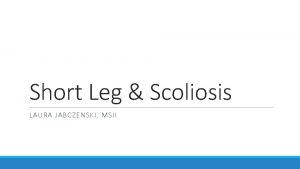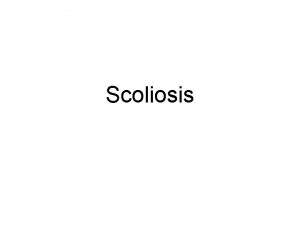Cotrel Derotation Casting For Progressive Infantile Scoliosis James




















- Slides: 20

Cotrel Derotation Casting For Progressive Infantile Scoliosis James O Sanders, MD 1 Jacques D'Astous, MD 2 Marcie L Fitzgerald, PA-C 3 Joseph G Khoury, MD 4 Shyam Kishan, MD 5 Peter F Sturm, MD 6 1. 2. 3. 4. 5. University of Rochester, NY Shriners Hospitals for Children, Salt Lake City, UT Shriners Hospitals for Children Erie, PA University of Alabama, Birmingham, AL Loma Linda University, Loma Linda, CA

The Word on the Street about Scoliosis Casting • Risser casting has a high incidence of rib deformity and cast sores. • Modern instrumentation has made casting obsolete for obvious reasons. • Casting and dinosaurs should be discussed together.

The Problem with the “Word on the Street” about Scoliosis Casting • Previously, casting was used indiscriminately for all scoliosis. • Instrumentation is not great for infantile curves: – Stiff spines (Growing Rods) – Crankshaft – Limited growth potential – Stiff chests (VEPTR) • Does early clubfoot surgery = scoliosis surgery? • Does Ponseti casting = early onset scoliosis casting?

Differences between Cotrel and Risser casting: • Risser – 3 point bend – Concern is Cobb angle – Cannot address rotation effectively – Deforms ribs in young children • Cotrel – a twist and a shift rather than a push and a bend – Primarily addresses curve through correction of the rotation – Goal is to improve the chest wall deformation


Tricks and Tips • • • You need a proper table. A mirror to look underneath is very helpful. Use only enough traction to narrow the body. – – • • Spring Effect Once the traction is off, there is nothing to hold correction unless you go under the chin and occiput. Mold the pelvis well – it’s the foundation. Make a big window on the posterior concavity (learned from Mehta) – • Pressure relief, ? Dynamic curve correction? , Improves rotation Questionable whether routinely over the shoulders is necessary – – Low apex curves are typical Does not seem to effect the results

To the Rack!!

Pelvic Mold

Rotational correction and use of the mirror

WINDOWS

Casting is well tolerated

Protocol • Cast changes based on age: ≤ 2 yrs, q 2 months 3 yrs, q 3 months ≥ 4 yrs, q 4 months • Cast until gone or stabilized • Bracing holidays periodically in older children. • Brace for 1 year after correction

Subjects: • 53 patients with progressive infantile scoliosis had more than one year of follow-up from the initiation of casting • Most greater than 2 years follow-up

Results: Follow up Cobb Angle # Age at Start Cobb at Start RVAD at Start Nash at Start Etiology <10 14 1. 1 37 26 1. 9 13 idiopathic 1 tethered cord 11 to 21 10 2. 2 41 20 2. 2 8 idiopathic 1 tethered cord 1 syndromic 21 to 40 12 2. 6 53 33 2. 4 7 idiopathic 5 syndromic >40 12 3. 1 71 37 2. 6 5 idiopathic 7 syndromic Cobb worsened. 5 2. 1 71 48 2. 2 1 idiopathic 4 syndromic

Results: • All but five patients responded to the casting. • Six patients have undergoing surgery to date – 4 because of worsening and 2 by parent choice. • The SAL improved from 0. 89 to 0. 93. • No patient experienced worsening rib deformities.

Pre and Post Casting Age 2 years Age 7 mo

Prognosis • Better with: – Younger Age at Start – Idiopathic Diagnosis – Moderate rather than Severe Curve (<60 degrees though success up to 60 degrees)

What Constitutes Failure? • Curve worsened = True Failure • If not cured but it beats the natural history or other treatments, it’s probably good. • Delaying surgery while preserving lung growth is good

Summary of Our Early Experience • Most curves respond. • Younger and non-syndromic patients respond faster than older patients • Older and syndromic patients improve (delay surgery) • Patients tolerate it very well. • Chest wall deformity does not seem to be an issue with proper casting. • The spines seem to remain flexible.

Younger, Smaller, Idiopathic – Don’t wait. Cast to Cure. Older, Larger, Syndromic – A Good Delay Tactic – no need to rush to surgery. Thank you!
 Infantile scoliosis casting
Infantile scoliosis casting Classificazione di magerl
Classificazione di magerl Derotation cast
Derotation cast Scoliosis advisor
Scoliosis advisor School spinal screening worksheet
School spinal screening worksheet Halo gravity traction
Halo gravity traction Mri scoliosis protocol
Mri scoliosis protocol Early onset scoliosis classification
Early onset scoliosis classification Scoliosis
Scoliosis Turnbuckle cast scoliosis
Turnbuckle cast scoliosis Disorder of synovium and tendon
Disorder of synovium and tendon Rvad angle
Rvad angle Coronal balance
Coronal balance Rib hump scoliosis
Rib hump scoliosis Scoliosis research society
Scoliosis research society Disorder of synovium and tendon
Disorder of synovium and tendon Scoliosis chiropractor seminole county
Scoliosis chiropractor seminole county Scoliosis advisor
Scoliosis advisor Hyperextesion
Hyperextesion Retained infantile swallow also known as
Retained infantile swallow also known as Infantile polycystic kidney
Infantile polycystic kidney

